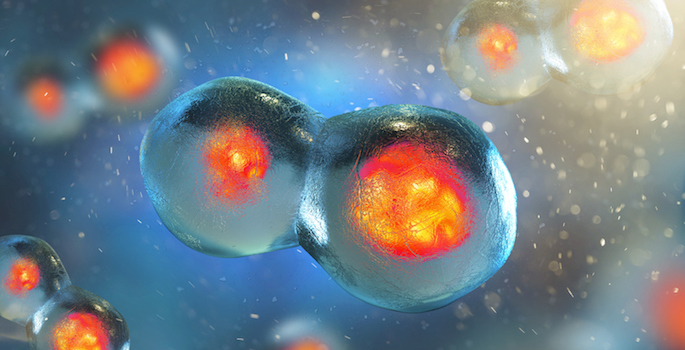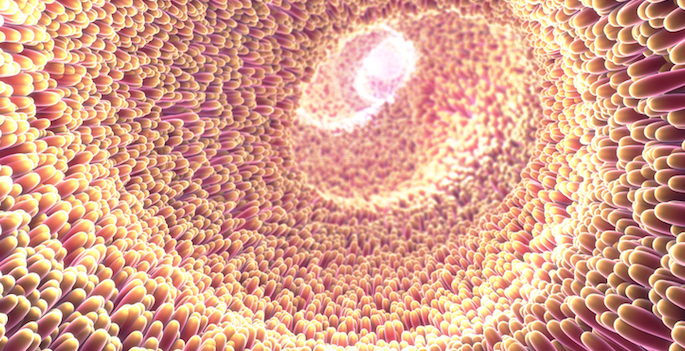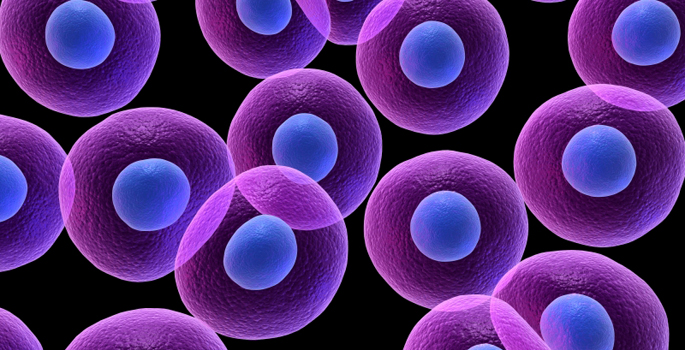NIGMS
-

Gregor Mendel would be proud
A computational method that uses hospital billing codes and electronic health records can identify genetic disease cases before clinical teams do. Read MoreDec 12, 2019
-

Understanding cell division
Vanderbilt researchers have uncovered another piece in the puzzle of how cells divide — a process that goes awry in cancer cells. Read MoreNov 18, 2019
-

Imaging host-pathogen battle for metal
An unprecedented view of bacterial products within infected tissues opens new opportunities to explore infection biology and devise novel therapeutic strategies. Read MoreOct 31, 2019
-

Completing DNA synthesis
James Dewar and colleagues have identified a role for the enzyme topoisomerase II in reducing replication errors during the final stage of DNA synthesis. Read MoreOct 21, 2019
-

A new regulator of B cell development
New findings establish a role for the pro-inflammatory molecule IL-33 in the early development of antibody-producing B cells. Read MoreOct 8, 2019
-

AI maps routes to heart disease
Machine learning on unlabeled electronic health record data has shed light on the emergence of cardiovascular disease. Read MoreOct 7, 2019
-

A catalog of DNA replication proteins
Vanderbilt scientists have identified 593 proteins that are enriched at sites of DNA duplication and chromatin packaging of newly synthesized DNA. Read MoreOct 3, 2019
-

Microvilli in motion
Live cell imaging studies have revealed that microvilli — finger-like protrusions on the surface of epithelial cells — move and collide as they form the brush border. Read MoreSep 19, 2019
-

The plus and minus of microtubules
Understanding the dynamic regulation of cytoskeletal microtubules may suggest new ways to treat disorders ranging from Alzheimer's disease to cancer. Read MoreSep 5, 2019
-

A “rheostat” for cancer signals
Jason MacGurn and colleagues have characterized a “rheostat” that sets WNT pathway signaling in breast cancer cells. Read MoreAug 27, 2019
-

New prostate cancer treatment concept
Combining immunotherapy and radiation therapy may be a powerful treatment approach for castration-resistant prostate cancer. Read MoreAug 22, 2019
-

New role for microtubules in diabetes
Microtubules, part of the cell's cytoskeleton, regulate the secretion of insulin, suggesting that they may be a new target for treating diabetes. Read MoreJul 29, 2019
-

Defective transporter linked to autism
A first-of-its-kind mouse model may help reveal mechanistic underpinnings for the altered behaviors of autism spectrum disorder. Read MoreJul 24, 2019
-

A critical factor for wound healing
Vanderbilt-Ingram Cancer Center scientists have discovered a role for a tumor suppressor protein in skin wound healing. Read MoreJul 16, 2019
-

Steroid binding to metabolic enzyme
Understanding how a steroid-metabolizing enzyme binds to its substrates may aid in designing drugs to treat sexual dysfunction as well as prostate cancer. Read MoreJun 12, 2019
-

Cell-cell signals in developing heart
Scott Baldwin and colleagues have discovered early signaling events during heart development, findings that could guide cell replacement therapies for heart disease. Read MoreJun 10, 2019
-

Study details regulation of a multi-drug transporter
Vanderbilt University researchers have discovered how a protein pump distinguishes between chemicals that it will expel from a cell and inhibitors that block its action. The new findings could guide the development of more efficient inhibitors to prevent cancer cell resistance to chemotherapy. Read MoreMay 30, 2019
-

How bugs overcome host defenses
Eric Skaar and colleagues have figured out how a common bug responsible for ventilator-associated pneumonia responds when starved of zinc, a metal it needs to survive, which may lead to new therapeutic targets for the dangerous infection. Read MoreApr 12, 2019
-

Novel DNA repair mechanism preserves genome integrity: study
David Cortez and colleagues have discovered a new DNA repair mechanism. Read MoreFeb 28, 2019
-

Analyzing single-cell landscapes
Qi Liu, PhD, Ken Lau, PhD, and colleagues have developed a new tool, sc-UniFrac, to quantify diverse cell types in single-cell studies. Read MoreNov 30, 2018